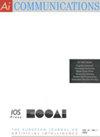基于多标准的内容增强混合过滤(MCCBHF)推荐系统中文本评论对用户偏好的影响
IF 1.4
4区 计算机科学
Q4 COMPUTER SCIENCE, ARTIFICIAL INTELLIGENCE
引用次数: 0
摘要
推荐系统帮助客户在互联网服务中找到有趣和有价值的资源。他们的首要任务是创建和检查用户的个人配置文件,其中包含他们的偏好,然后用额外的功能更新他们的配置文件内容,最终提高用户的满意度。对要推荐的项目的具体特征或描述和评论在确定偏好方面也起着重要作用。然而,从用户的活动中推断用户的兴趣是一项具有挑战性的任务。因此,在没有用户干预的情况下确定用户的利益是至关重要的。这项工作阐明了文本内容与元数据和显式评级在促进协作技术方面的有效性。为了推断用户的偏好,使用基于维德词典的情感分析方法从文本评论中提取用户特征和项目特征来增强元数据内容信息。在做情绪分析之前,为了更好的表现,讽刺和讽刺的评论被删除,因为这些评论与情绪的极性相反。使用Amazon产品数据集进行分析。从文本评论中,我们确定了导致用户给出总体评分的原因,即兴趣特征(FoI)。FoI被制定为多标准,多个标准的评级是由用户给出的单一评级计算出来的。基于多标准的内容增强混合过滤技术(MCCBHF)是一种基于用户评论文本和评分的用户偏好分析技术。该技术用于增强各种协同过滤方法,增强后的MCKNN, MCEMF, MCTFM, MCFM技术为用户提供更好的个性化产品推荐。在本文提出的MCCBHF算法中,与其他算法相比,MCFM算法的RMSE值最小,为1.03。本文章由计算机程序翻译,如有差异,请以英文原文为准。
Factoring textual reviews into user preferences in multi-criteria based content boosted hybrid filtering (MCCBHF) recommendation system
Recommendation systems help customers to find interesting and valuable resources in the internet services. Their priority is to create and examine users’ individual profiles, which contain their preferences, and then update their profile content with additional features to finally increase the users’ satisfaction. Specific characteristics or descriptions and reviews of the items to recommend also play a significant part in identifying the preferences. However, inferring the user’s interest from his activities is a challenging task. Hence it is crucial to identify the interests of the user without the intervention of the user. This work elucidates the effectiveness of textual content together with metadata and explicit ratings in boosting collaborative techniques. In order to infer user’s preferences, metadata content information is boosted with user-features and item-features extracted from the text reviews using sentiment analysis by Vader lexicon-based approach. Before doing sentiment analysis, ironic and sarcastic reviews are removed for better performance since those reviews inverse the polarity of sentiments. Amazon product dataset is used for the analysis. From the text reviews, we identified the reasons that would have led the user to the overall rating given by him, referred to as features of interest (FoI). FoI are formulated as multi-criteria and the ratings for multiple criteria are computed from the single rating given by the user. Multi-Criteria-based Content Boosted Hybrid Filtering techniques (MCCBHF) are devised to analyze the user preferences from their review texts and the ratings. This technique is used to enhance various collaborative filtering methods and the enhanced proposed MCKNN, MCEMF, MCTFM, MCFM techniques provide better personalized product recommendations to users. In the proposed MCCBHF algorithms, MCFM yields better results with the least RMSE value of 1.03 when compared to other algorithms.
求助全文
通过发布文献求助,成功后即可免费获取论文全文。
去求助
来源期刊

AI Communications
工程技术-计算机:人工智能
CiteScore
2.30
自引率
12.50%
发文量
34
审稿时长
4.5 months
期刊介绍:
AI Communications is a journal on artificial intelligence (AI) which has a close relationship to EurAI (European Association for Artificial Intelligence, formerly ECCAI). It covers the whole AI community: Scientific institutions as well as commercial and industrial companies.
AI Communications aims to enhance contacts and information exchange between AI researchers and developers, and to provide supranational information to those concerned with AI and advanced information processing. AI Communications publishes refereed articles concerning scientific and technical AI procedures, provided they are of sufficient interest to a large readership of both scientific and practical background. In addition it contains high-level background material, both at the technical level as well as the level of opinions, policies and news.
 求助内容:
求助内容: 应助结果提醒方式:
应助结果提醒方式:


